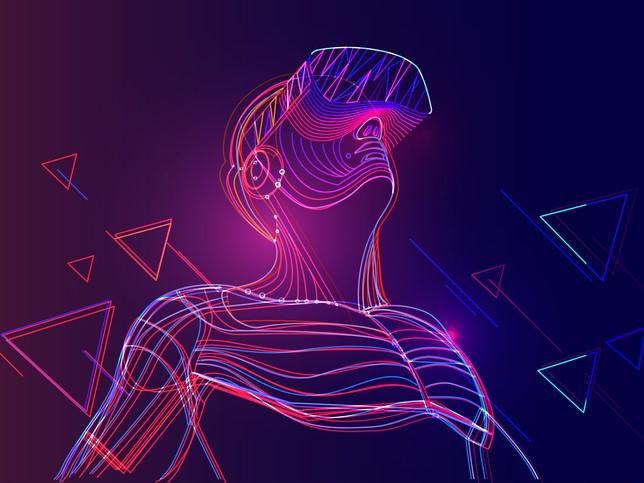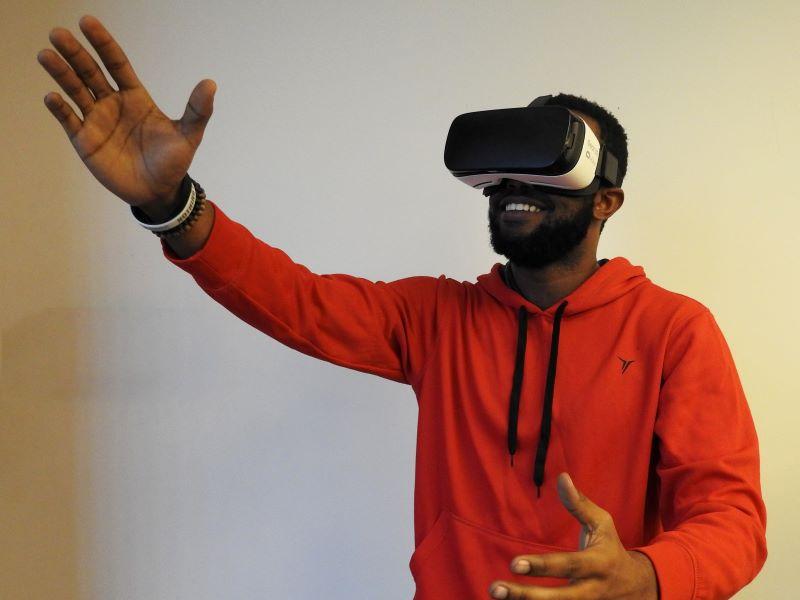
Immersive tech in teaching and learning: first steps into the metaverse
Virtual, augmented and mixed reality can provide powerful experiences for students, and it’s probably not as difficult as you think. Neil McDonnell provides simple, practical advice

The immersive technologies of virtual, augmented and mixed reality (VR/AR/MR, collectively XR) offer extraordinary and daunting possibilities for a future in which we live and learn in a blend of the real and virtual worlds – what some call the metaverse. That future may be a decade or more away, but the XR technology of today is ready and able to deliver powerful teaching tools for relatively little cost. In this piece I outline some practical guidance on how and where to start.
Select your platform
VR experiences are powerful but all-consuming, and they require dedicated time, space and equipment. This is less costly (£300 for an outstanding headset: the Oculus Quest 2) than most imagine but it remains a practical challenge when teaching at scale. For those with access to the relevant resources, VR delivers immersive and engaging experiences that give a sense of place, scale and 3D structure. One example might be a virtual geology field trip to experience a far-off space and take measurements/virtual photos.
AR experiences today do not yet deliver their eventual promise of a seamless augmented layer on the world, but they are available to anyone with a modern smartphone. AR allows you to contextualise virtual objects in the real world and give a sense of 3D structure/scale. Shared AR experiences allow users to communicate about such objects with annotations, via zooming and rotating, or (with advanced kit) using natural gestures. An example might be students learning about a complex biological system such as the beating heart, with the ability to peel back layers while discussing with classmates.
Which platform you select will depend on the available equipment and software of course, but it should also consider whether you need to experience a full environment (VR) or an isolated object (AR), and whether leaving behind your real-world environment is desirable (VR) or not (AR). Both technologies offer a 3D medium and a suspension of the usual physical limits that apply to the real world. Any subject dealing in 3D topics, or concerning dangerous, inaccessible or expensive objects of study could benefit.
- Two edtech trends that educators should watch for
- Top tips for selecting and implementing new technologies
- Using virtual reality to create avatar videos for teaching online
Software
XR software is predominantly pre-made applications that include all the tools, objects and models you might need. Medical VR applications, space explorations and historic experiences of this kind abound (for example, The Body VR, Mission: ISS, Titanic VR). While such apps use the unique features of VR brilliantly, the chances of pre-existing content that meets your specific teaching needs is slim (see Project Mobius).
There is an alternative: software that supplies the tools but lets you supply the content. YouTube and PowerPoint do this when they supply the platform, but you supply the content. Several XR platforms have emerged offering this kind of flexibility, including Spatial, Horizon Workspaces and Mozilla Hubs. Others specialise in educational applications, such as Engage VR, EON XR and Edify.
Given the need for quality control, the “bring your own content” approach seems to fit the needs of XR in teaching. So, where can you get the content?
Content
Vast 3D libraries of objects and environments already exist, from the generalist professional and commercial databases such as TurboSquid, to the domain-specific and open-access like Europeana. Searching the existing databases should be the first port of call to find the content you want. My go-to repository is Sketchfab, where extraordinary high-quality assets are available to educators either for free, or for very little cost (typically £25 or so).
Failing that, smartphone and tablet apps exist to let you capture your own content with photogrammetry (take lots of photos and the software stitches them into a model). The latest generations of iPad and iPhone (since 2020) include depth-sensing, which dramatically improves the accuracy that can be achieved (3D Scanner App on iOS).
The final option is to get a 3D artist to create the content you need. The cost of this will vary greatly, but once built the 3D model becomes an asset that can be used in perpetuity, and ensure posterity.
Getting Started
Those unfamiliar with immersive technology may feel overwhelmed by the options and possibilities outlined here, so I recommend a two-step on-boarding process that should allow anyone to start using XR technology straight away for free. The gateway drug in this case is the aforementioned Sketchfab.
Step 1: Search for models, ideally related to your subject area, on the Sketchfab website or app. Don’t worry if it carries a price tag, playing around (or embedding in Moodle or a webpage) is free.
Step 2: Using the Sketchfab app now, find an object you wish to use and select the AR option at the top (this looks like the outline of a cube but with gaps). Place the object on a flat surface via camera as prompted. Walk around, scale and rotate the object. Congratulations, you are now working in AR!
Neil McDonnell is research fellow in philosophy and augmented and virtual reality at the University of Glasgow.
Neil McDonnell and the University of Glasgow have been shortlisted for Knowledge Exchange/Transfer Initiative of the Year at the THE Awards 2021. A full list of shortlisted candidates can be found here with the winners due to be announced at a ceremony on 25 November.
Academics and university leaders from across the UK and Ireland will come together at THE Campus Live UK&IE to talk about institutional strategies, teaching and learning, the student experience and more. Join us for this two-day event in London.
